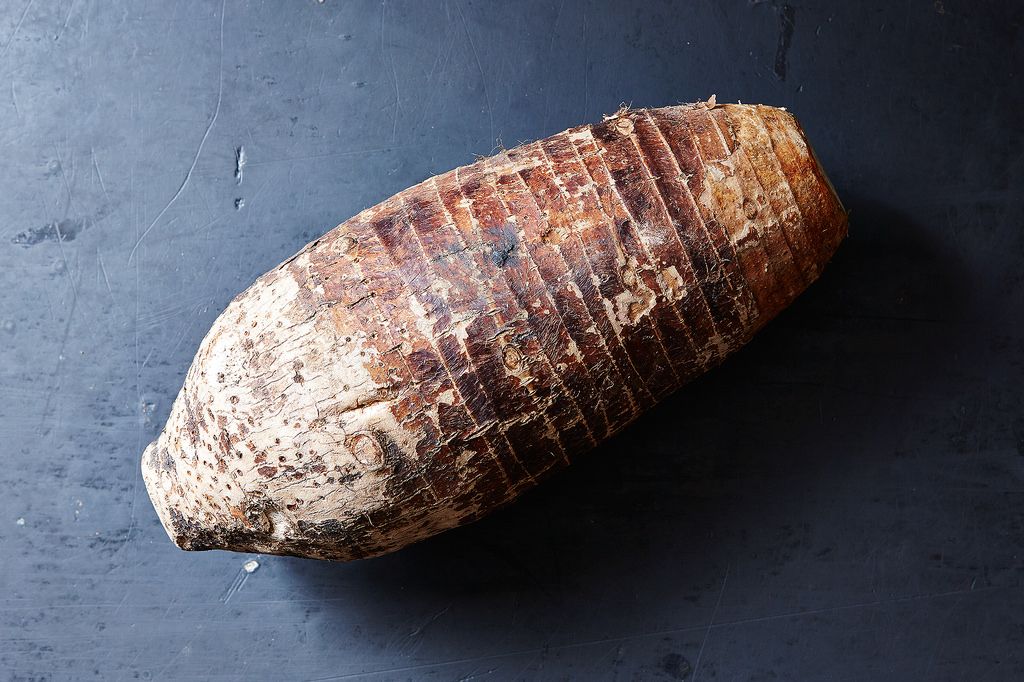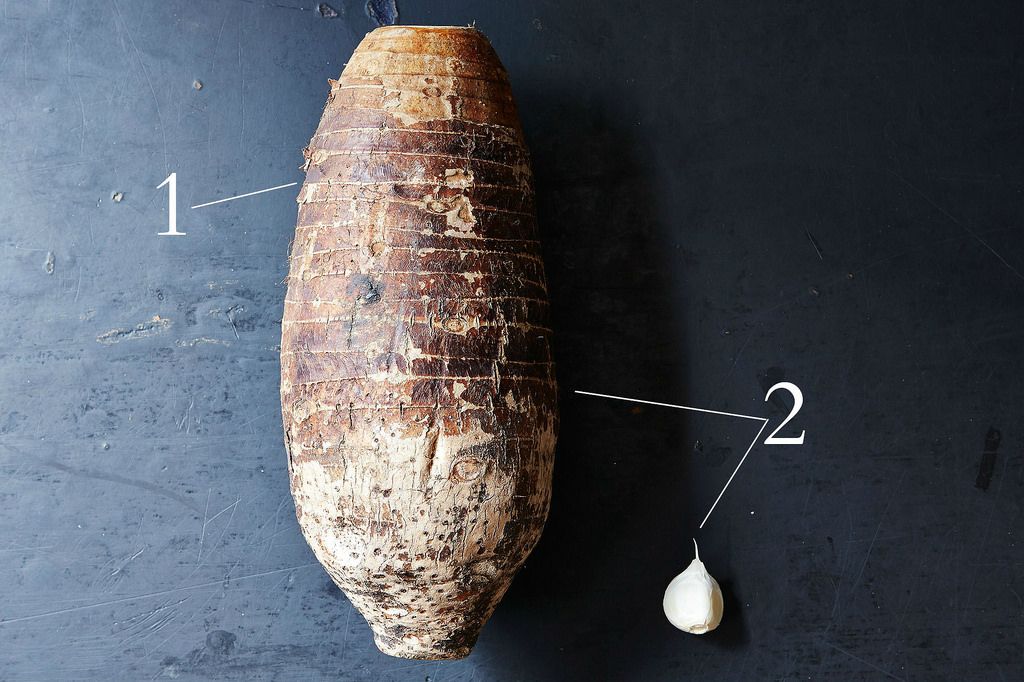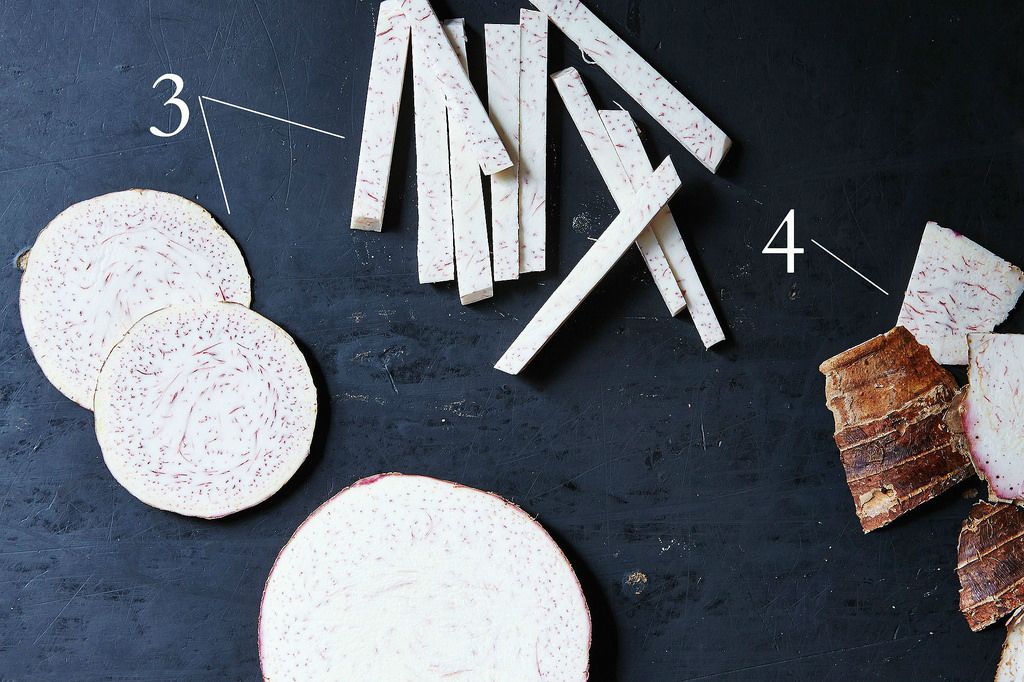Root Vegetable
Everything You Need to Know About Taro
Get to know a tropical tuber you might have been missing out on.
Photo by Bette Blau
The Magical Mini Guide to Cozy Weekends

The Magical Mini Guide to Cozy Weekends
Whether you're in the mood for some soup-simmering, leaf-peeping, or nothing at all, your dream weekend awaits...
View GuidePopular on Food52
Continue After Advertisement
20 Comments
SųĞą≡FıęŇđ
April 2, 2023
I'm in Melbourne Australia & have always enjoyed a good cup of tea . I thought I'd try the boba/bubble teas and I was addicted to the taro on my first taste. Then I got one from another store that was chunky and had the consistency of chunky mashed potato which is an unpleasant surprise when you've never had taro paste bubble tea. So I googled it and remembered a friend from Samoa had told me about this giant bland potato that has no taste according to him but he said it was a staple for islanders and he also claimed that (taro) was the secret to why Polynesian peoples are all so big & strong....haha ...and said it was why he was skinny & not as strong as others.
I find it interesting that it's considered a savoury by some and it just goes to show the complexity of cooking & I have enormous respect for Asian cuisine.
I would love to share my take for taro paste ive been usung to make taro tea that is similar to powdered taro tea.
I wash 1kg taro, peel, dice into smaller chunks (wearing gloves) as it will give you dermataros 🫣 if you bare back it with your hands. I steam it untill its easy to fork..at least 15-30m. O ce cooked mash a bit and then add a can of coconut crm and can of sweetened/conden coconut milk . I add a little pinch of salt a tbs of glucose syrup and 3-4tsp of purple yam/ube flavouring and then i use a stick blender to puree it all . I usually freeze for a few hrs and sort of goes like soft ice cream. I keep majority of the paste in the freezer and a tub in the fridge that keeps for 5 days. I scoop 3 big spoonfulls into a 500ml cup and brew some red vanilla (thai tea) in one of thise tea for 1 kits and use 2tbs coffeemate creamer and sugar according to taste. I add sugar and creamer to the tea pot first and then 1½tsp of thai tea mix . Ill let you know what brand of thai tea as its great just on its own and id searched for a while to find a store that had some of the ingredients but the thai tea and the purple yam flavouring made all the difference & i highly recomend .
You can add coconut jelly or pearls
I find it interesting that it's considered a savoury by some and it just goes to show the complexity of cooking & I have enormous respect for Asian cuisine.
I would love to share my take for taro paste ive been usung to make taro tea that is similar to powdered taro tea.
I wash 1kg taro, peel, dice into smaller chunks (wearing gloves) as it will give you dermataros 🫣 if you bare back it with your hands. I steam it untill its easy to fork..at least 15-30m. O ce cooked mash a bit and then add a can of coconut crm and can of sweetened/conden coconut milk . I add a little pinch of salt a tbs of glucose syrup and 3-4tsp of purple yam/ube flavouring and then i use a stick blender to puree it all . I usually freeze for a few hrs and sort of goes like soft ice cream. I keep majority of the paste in the freezer and a tub in the fridge that keeps for 5 days. I scoop 3 big spoonfulls into a 500ml cup and brew some red vanilla (thai tea) in one of thise tea for 1 kits and use 2tbs coffeemate creamer and sugar according to taste. I add sugar and creamer to the tea pot first and then 1½tsp of thai tea mix . Ill let you know what brand of thai tea as its great just on its own and id searched for a while to find a store that had some of the ingredients but the thai tea and the purple yam flavouring made all the difference & i highly recomend .
You can add coconut jelly or pearls
samrubeth
January 19, 2023
Taro is indeed a plant that has many benefits. Every part of the taro plant can be used if you know how to handle it. There are also quite a lot of food and beverage menus that use taro as an option. I am very grateful for your blog which provides good education about taro. I love it. Maybe we can share some information about taro at https://taroindonesia.com/
Thanks a lot
Thanks a lot
steph
January 13, 2022
As someone who was born and raised in Hawaii, I think it's important to note that homemade poi is several galaxies' distance in flavor and texture from store bought poi. I'd like to hear if Barbara Kafka has experienced it the way ancient Hawaiians, and today's locals, have made it.
SųĞą≡FıęŇđ
April 2, 2023
Is poi a sweet & sour soup? The lady at the grocer was trying to tell me about a dish they have in Indonesia with taro that's strange but delicious . But there is some Asian foods that I find I can't stomach like whatever is in an Asian pork roll that others seem to love but a friend kept ordering a dish in China town in Sydney when we where setting up for the maritime exhibition. After getting it 3 nights in a row I asked what are you eating and he said the name of the dish but I said no what exactly is it and he said it was cooked turtle intestines after letting me try some and I didn't believe him and he called the waiter over and said can you tell this young man what I'm eating, he recognised it easily and said it's chinese name and then said "what' yoo..no..like turtle intestine? Whats wrong is it squirming around in belly...mmm yummy yummy turtle intestine in my tummy and I still wasn't sure if he was pulling my leg but it was funny. And if it was then where do I find turtle intestine haha
Clesh
January 28, 2021
I was so fascinated to come across this article! I grew up eating Taro for breakfast - my mom simply pealed and steamed them and once ready she would sprinkle some sea salt and voila! We would then pair it with eggs and a cup of chai instead of bread. In swahili it’s known as “Ndoma” :-)
marigael
October 3, 2017
I bake mine like a baked potato. I like the crispy skin so scrub all of the hairy stuff off and stick it in the oven until soft when I squeeze it. Absolutely delicious with a bit of butter and a sprinkle of salt. I eat skin and all. It is remarkably sweet but then so are potatoes when one is not used to eating potatoes. The flesh is a grayish color which does not bother me. It is not fluffy like a baked potato, rather it does lean towards that glue like texture so I tend not to mash it. Rather, I break it up with the side of my fork add the butter to the crevices and then pop one of those chunks into my mouth and it is a joy to eat.
Gil P.
November 5, 2016
I use the Taro root to make what we call in Puerto Rico "Pasteles" and to prepare it so it does not turn into goo we squeeze as much of the starch of it after grinding it. We achieve this with use of cheese cloth. Then we apply the desired condiment and mix it with some either chicken or beef broth and in order to add color we add some oil which has been prepared with "Achiote". We then spread a large spoon amount onto a plantain leave and add in the center prepared meats, a chick pea, an olive, and a small strip of red pimento. Then it is rapped and tied. To kook it we boil it in water for for ~ 40 minutes. And it becomes a whole meal. Check in youtube content of "how to make taro (yuca) pasteles. and give it a try. BTW, the starch you remove from it can be use to starch your blue jeans or other applications.
LeBec F.
January 28, 2016
My gateway to taro was through DimSum here in Boston. Deepfried taro 'footballs' with pork filling; and shredded taro coating on shrimp cakes. yummola! As a 52er, I've entered a few Taro recipes- some refreshing summer Smoothies and Taro, Shrimp and Bacon Fritters . I love the slightly sweet but nutty very unusual/unique flavor of taro. I have learned that I like the large variety with purple flecks in the flesh, and not the small ones.
KellyinToronto
March 1, 2015
I ove taro!! My mom makes a great stew with taro, coconut milk and spareribs with ginger and green onions. it's really good if you throw some Lap Chung in there too1
SųĞą≡FıęŇđ
April 2, 2023
This sounds like the dish explained to me recently. Is your mum from Indonesia or Thailand
Amanda C.
March 1, 2015
My grandma makes baked taro fritters with diced up Chinese sausage and scallions. My dad puts taro cubes in chicken curry. I enjoy eating this clear and sweet hot soup with taro, butternut squash, and hazelnuts.
Rachel C.
March 1, 2015
A few years ago at a restaurant called Monkeypod in Maui, Hawaii, I had taro root hummus that was SO good! We told them they should start selling it at Trader Joe's and start a national obsession.
Lindsay-Jean H.
March 2, 2015
I think it has a much better shot at national obsession status than peanut butter hummus does!
HalfPint
February 28, 2015
Shaved ice with condensed milk, chunks of cooked taro, adzuki beans and cream is the most incredible dessert.
Joy H.
February 28, 2015
Thanks for linking to my blog! Another way I enjoy taro is in taro bubble tea and swirled into Hokkaido milk bread! http://the-cooking-of-joy.blogspot.com/2014/09/hokkaido-milk-bread-three-ways.html





See what other Food52 readers are saying.